Huayuash 4-day trek in Peru in April: an adventure for people who like nature with a challenge. Here's my travel journal + tips if you'd like to do this trek at the end of the wet season ![trekking Peru Huayhuash in April, end of wet season]()
Trekking Cordillera Huayhuash in Peru with four friends I met on the road and a local Peruvian guide was a splendid experience—one that I recommend for anyone who likes nature with a challenge. Here’s some excerpts from my journal and travel tips if you’d like to do this 4-day Huayhuash trek in April, at the end of the wet season in Peru.
Travel Log
HAPPINESS THERAPY: 4-DAY HUAYHUASH TREK IN PERU
DATE: 05 APRIL 2023 #travel guideTrekking Cordillera Huayhuash in Peru with four friends I met on the road and a local Peruvian guide was a splendid experience—one that I recommend for anyone who likes nature with a challenge. Here’s some excerpts from my journal and travel tips if you’d like to do this 4-day Huayhuash trek in April, at the end of the wet season in Peru.
Travel Log
The first ascent
We're at 4800 meters of altitude. We've been climbing since 5 AM—a vertical, abrupt ascent. I’m gasping for air, and with each weary step, my swollen feet trudge across the frozen terrain, their weight a constant reminder of the long path ahead. So why are we still walking despite the pain?
A hike in the mountains is a perfect metaphor for the path of life. Obstacles, feelings of joy and fear, perseverance and courage punctuate the walk. And we keep moving despite the challenges. Because we know that something's waiting for us up there at the top, something beautiful, something worth living for.
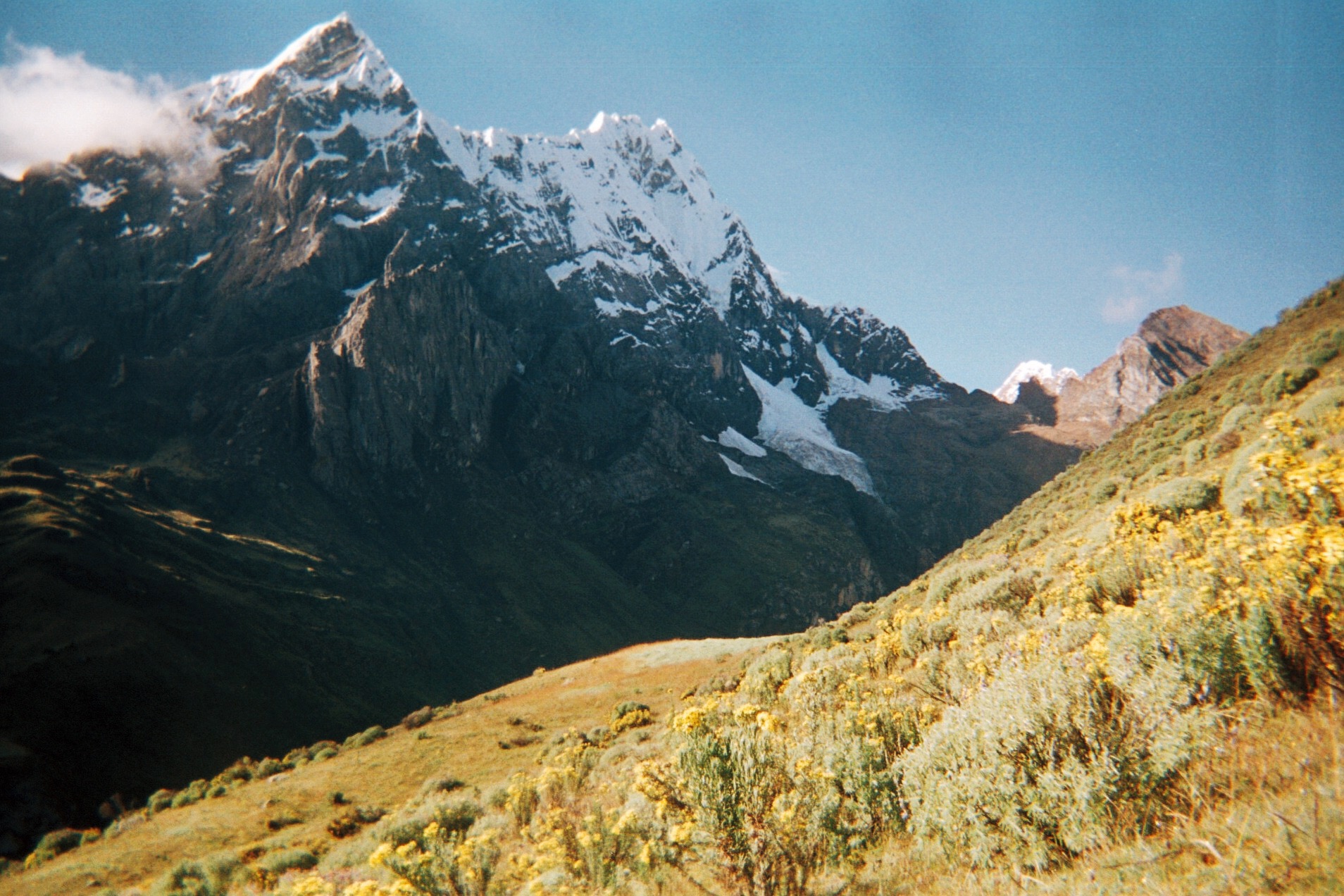

Image 2 shot by Judith (@judithodm)
Day 3 - Carhuacocha - Laguna Sotteracocha
We wake up at 4 AM. We put on our frozen shoes (temperatures dropped to -10° at night, and the morning fog laid a thin layer of ice on our gear) and start the first ascent of the day. My feet are freezing despite good socks, and I walk painfully, my eyes riveted to the ground. Meanwhile, our Peruvian guide effortlessly glides ahead, his thin cotton socks and Nike sneakers defying the norm.
We huff and puff like buffaloes with each step, but he, born in the hollow of this mountain range at 4300 meters, has a body adapted to the weather and climbs with elegance—a confident, fast and robust pace. I asked him if he would like to live lower down one day in Huaraz—a city buzzing with people and colours. He said with a smile: "Here, I have the view, my father, my horse, and trout. As long as there's trout, I'm happy."
We arrive at his humble village: four huts in a field near a lake at the foot of a glacier. His house is painfully basic: no floor, just the ground. A no-frills fireplace, a thatched roof, and a straw mattress on a bed carved in the rock. A chair, a table, nothing more. Just the essentials to survive.
Like an alpine version of Robinson Crusoé, he fishes for trout with a wooden stick and a maggot at the end of a line. He makes four rustic fishing rods, and we all pitch in. In thirty minutes, he caught a dozen trout. And us, not one!
Like an alpine version of Robinson Crusoé, he fishes for trout with a wooden stick and a maggot at the end of a line. He makes four rustic fishing rods, and we all pitch in. In thirty minutes, he caught a dozen trout. And us, not one!

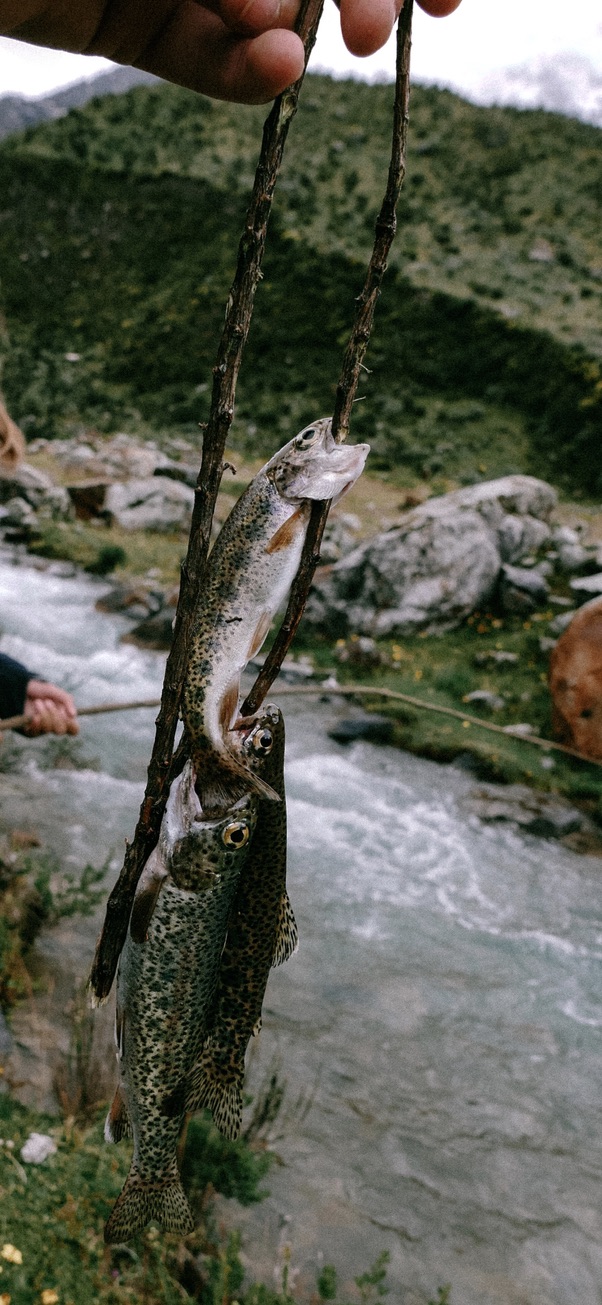
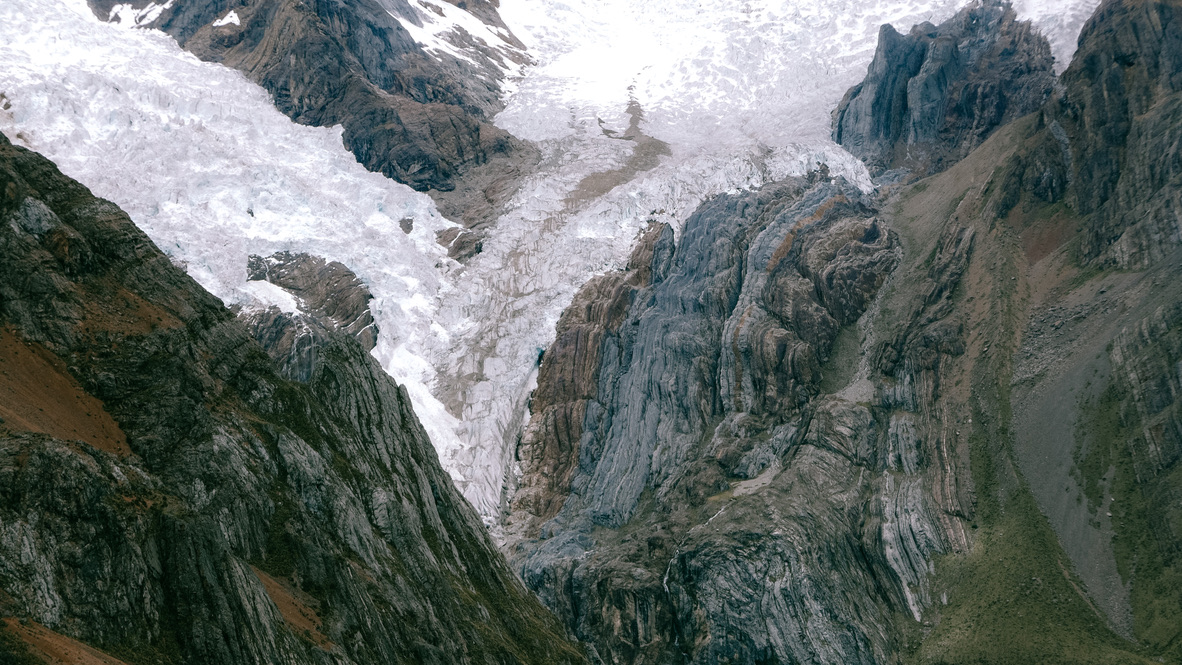
![]() Facing Mount Yerupajá, 6635m
Facing Mount Yerupajá, 6635m

Mountains spread out as far as the eye can see. The weather is grey, but everything is splendid.
The black and ochre rocks appear as though sculpted into thin, sharp slices torn by rivers of eternal ice. At the foot of the summit, a turquoise lake, motionless, beams through the coal-black slopes. The mountain's reflection glides across the opaque water. Out of breath, we contemplate in silence this marvellous panorama.
We don't need to speak to share the unanimous joy running through our minds. Our muscles revive, proud of our effort for this God-given gift. And in an instant, I'm happy.
Day 4, the last day
Seeing no one for four days but our guide and my three trekking companions was unlike anything I had ever experienced. If felt as if we had the entire world to ourselves. Indeed, we didn't meet any other hikers on our journey, except on the last day. And this last day was a gift, because the sky cleared at last! Finally, an unobstructed view of the Andes. We saw horses galloping through a vast field of wildflowers, while the glistening river and majestic glacier mirrored nature's grandeur. Our guide's face lit up with a radiant smile as we basked in the raw beauty of his homeland—this was the pinnacle. We were in an alpine utopia.
At sunset, we met other hikers who had just finished the fifteen-day loop of the Cordillera Huayhuash. They told us about their harrowing journey to the summit at 6000 meters under the snow and the wind, solo, without a guide. I admired their courage. We all contemplated together the burning sky. Everything was a delicate scarlet vermilion—the clouds, the river, the glacier.
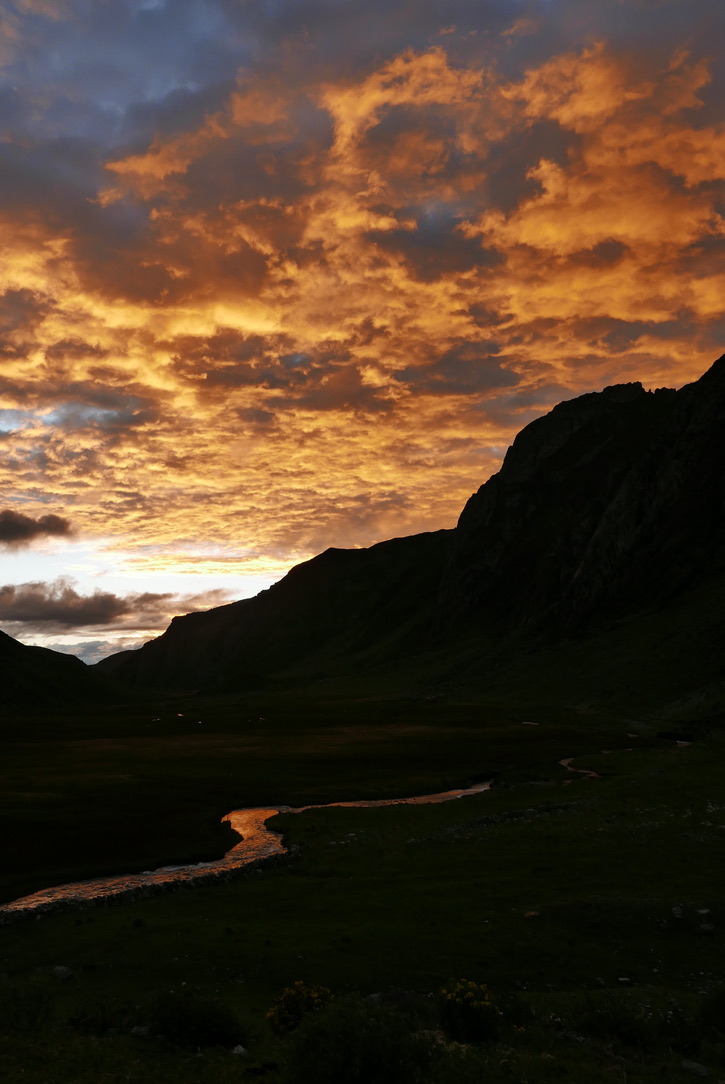
I put on my sleeping bag. I listen to the unruffled silence of the valley. I feel a touch of nostalgia. I'd like to stay here for a few more days. And keep looking at this celestial sky. But I hold on to one of my next stops on the map: surfing in Brazil, soon back on my board, where I'll find the same feeling of well-being and serenity. Under the tent, on my surf board, in the mountains, or in the ocean.
Travel Guide
How to do the 4-day Huayhuash trek in Peru
What’s the best time to trek the Cordillera Huayhuash in Peru?
The best time to trek Cordillera Huayhuash is from May to September, although you’ll cross many more hikers on your path during the dry season. I’d recommend going off-season, right at the end of the wet season in Peru. Here’s why:
Many people told us not to go to Huayshuash in April, mainly because of the unpredictable weather and heavy rain. My two friends and I struggled to motivate people to join our group, as we needed to be at least four to go. After circling hostels in Huaraz to find one courageou hiker to come with us, we could secure a last-minute local guide with Huayhuash Adventures—a local agency that I strongly recommend.
What’s the weather like in April in Cordillera Huayhuash?
It rained a lot in the afternoon but the weather was always sunny in the morning, so we started walking at around 4 AM and went to bed very early. Bring warm layers and extra pairs of wool socks. Unfortunately, I didn't have waterproof hiking shoes - I had brought a basic pair of Salomon trail shoes to South America and didn't have space for anything else. I regretted not bringing a pair of leather hiking boots or GoreTex shoes for this hike. We only had one day of full sun, so my shoes were wet during the entire trek.
Although the weather wasn't impeccable, we were alone in the mountains: only the five of us in vast landscapes. We crossed other hikers at the very end of the trek, when heading back to Llamac. And for this exquisite sense of solitude, it’s worth doing the Huayhuash trek in April.
Why choose Huayhuash Adventures for this 4-day trek in Peru?
Our guide was born in the Huayhuash valley, near the glacier. It was a wonderful experience to visit his home and hear about his life growing up in the mountains. Other more popular agencies in Huaraz didn't have guides that had lived in Huayhuash, and also had larger groups. The fewer people you are to do this trek, the better.
The meals were excellent, cooked by our guide. On the menu: freshly caught trout from the valley, rice, pasta, soups, and hearty veggies.
How hard is the mini Huayhuash trek?
I found the trek relatively easy, but the altitude and the weather made some parts of it challenging. But I'm an avid hiker with years of experience hiking in the mountains. So I wouldn't recommend beginner hikers do this trek in April.
I did three five-hour hikes the week before Huayhuash to get used to the altitude. During the Huayhuash circuit, I didn't feel altitude sickness, even when we camped at over 4000 meters. I actually had the best sleep of my life up there.
How much does the 4-day trek in Cordillera Huayhuash cost?
We went with Huayhuash adventures, a local travel agency in Huaraz. The 4-day "mini Huayhuash trek" costs around 100 euros, including all meals, round-trip transport from Huaraz to Llamac, and camping gear (tents, sleeping bags, mats...).
What to pack for the 4-day Huayhuash circuit in April or during the off season?
Pack light, and pack in layers. You’ll carry everything with you during the whole trek. We left our big backpacks in a hostel in Huaraz and brought only the essentials in a 25L backpack:
☒ Raincover for your backpack
☒ Warm fleece
☒ 2 sweat-proof or merino-wool T-shirts
☒ Merino-wool socks (5 pairs if you don’t have waterproof shoes)
☒ Trail running shoes, or, if you brought some for your backpacking trip, leather/GoreTex hiking shoes with ankle support
☒ Hiking pants
☒ Sports leggings
☒ Warm pyjama
☒ Waterproof and windproof jacket
☒ Hat and sunglasses
☒ Beanie
☒ Small scarf or neck warmer
☒ Water bottle (with a water filter like this one if you want to taste the valley’s fresh mountain water)
☒ Toiletries: sunscreen, moisturising cream, lip balm, tea tree oil, biodegradable soap and toothpaste. I didn’t shower during the trek (it’s very, very cold, and raining in the afternoon, so you get the idea).
Need a full list of the backpacking essentials you should bring to South America? Download by all-in-one backpacking trip planner. It includes a travel budget worksheet, a backpacking essentials
list for a 6-month trip in South America, a South America trip itinerary and wish list, along with other bonuses. And it’s free!
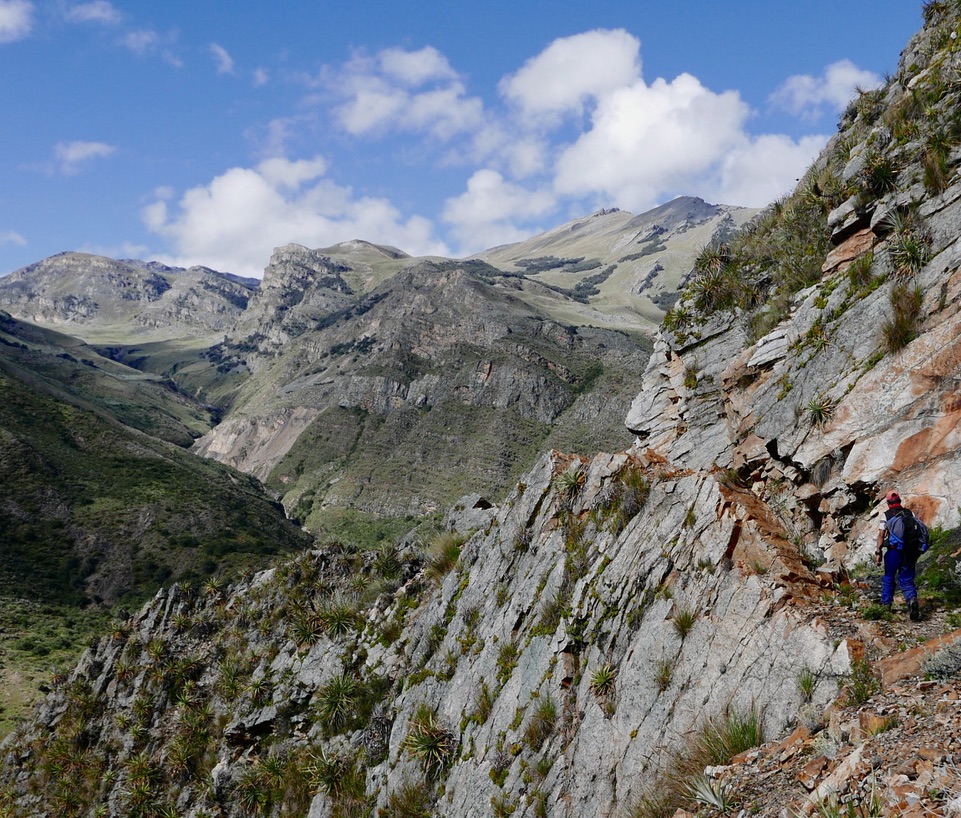



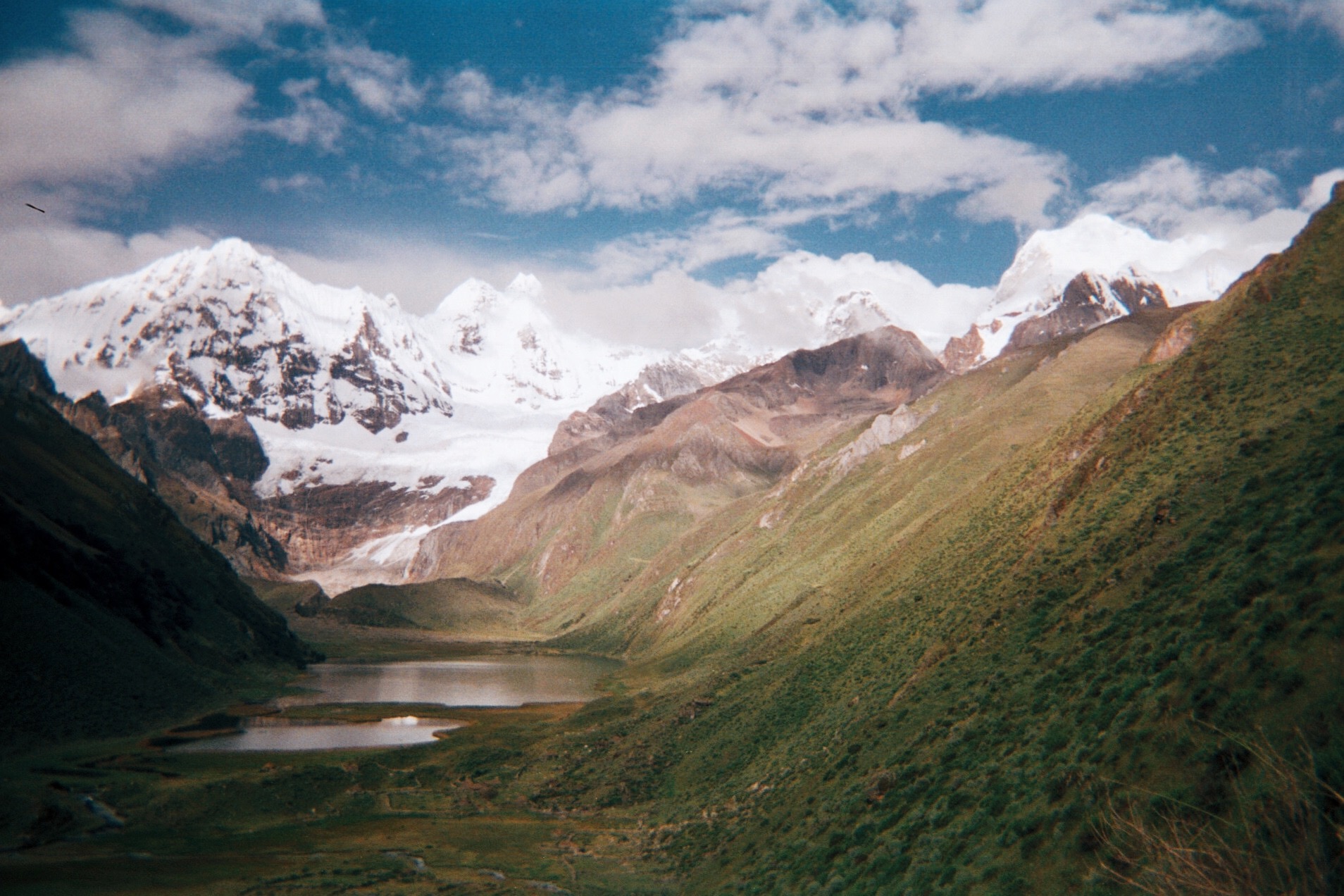
Read this destination guide in French︎︎︎
If you need more tips, drop me a line and I’ll help you out :)